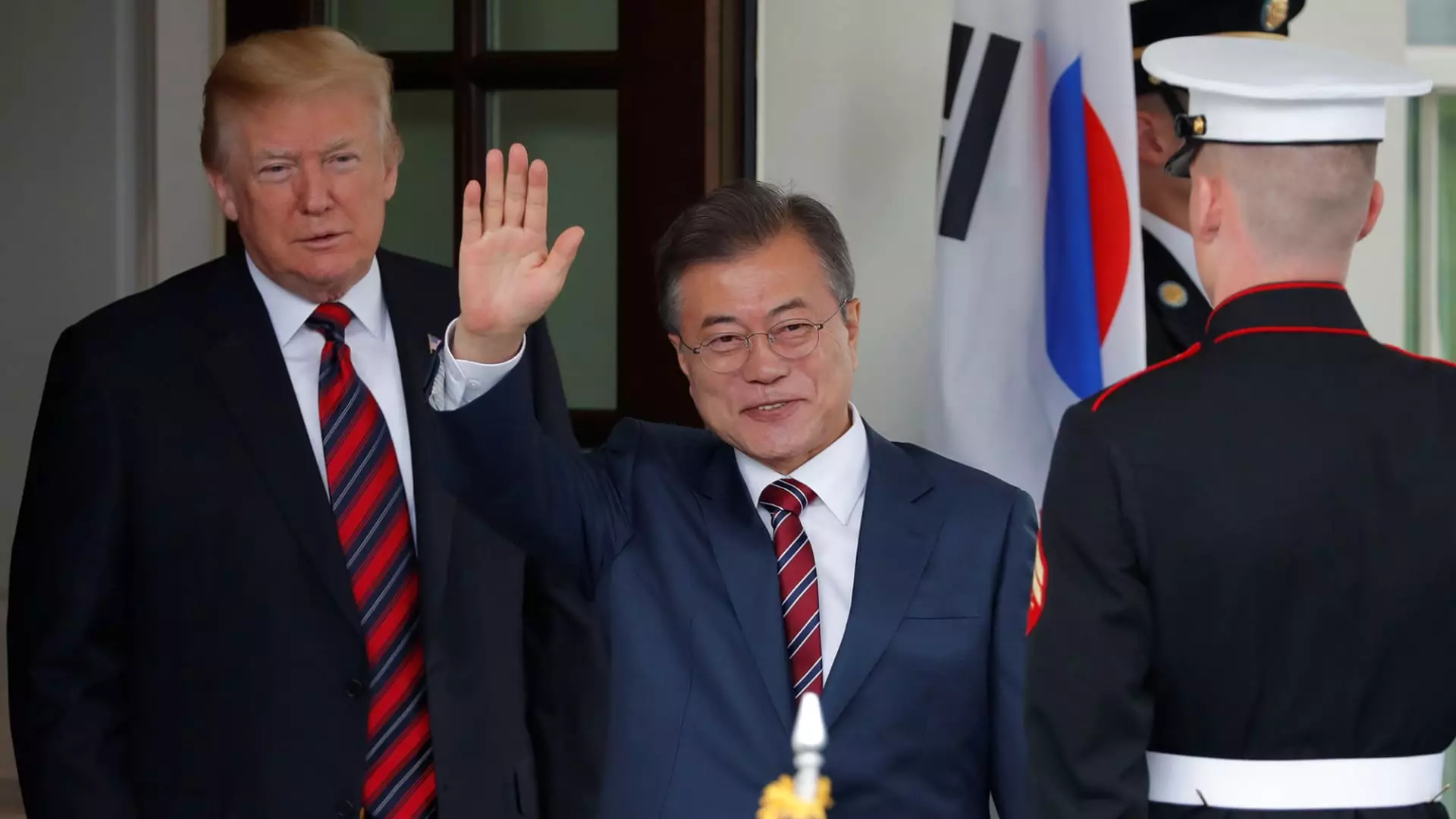The landscape of the automotive industry is perpetually evolving, shaped by intricate international trade dynamics and economic policies. Recently, the discourse surrounding tariffs has intensified, particularly under the guidance of President Donald Trump, who has hinted at further levies on trading partners. While the focus often seems to revolve around Mexico and Canada, a significant consideration lies in the ramifications for automakers in South Korea and Japan, contributing collectively to a noteworthy segment of the U.S. vehicle market.
In 2024, vehicles produced in South Korea and Japan accounted for an astonishing 16.8% of the automobiles sold in the U.S., with South Korea emerging as a significant player, exporting 8.6% of all cars, just edging out Japan’s 8.2%. This trend underscores a shifting dominance in car exports, as South Korea has shifted into the role of a primary contributor to the American market, surpassing Japan, which has been historically entrenched in automotive exports. As these two nations represent the largest non-North American importers of vehicles into the U.S., increasing tariffs could have far-reaching consequences particularly for companies like Hyundai and General Motors, which have significant exposure in these markets.
The automotive landscape for Japanese manufacturers such as Toyota, Nissan, and Honda is equally precarious. Vehicles imported from Japan currently bear a tariff of 2.5%, which, while relatively low, can severely impact profit margins if new tariffs are introduced. Last year, approximately 1.31 million vehicles from Japan were sold in the U.S., but recent trends point to a declining share as South Korean exports rose significantly. From 845,000 vehicles in 2019, South Korean cars now account for a notable increase, fostering a competitive edge that could be jeopardized by looming tariff hikes.
Despite former President Trump’s trade renegotiations in 2018, which purportedly aimed to enhance U.S. automotive access to South Korea, the deal appears to have fallen short of its promises. The absence of tariffs on car imports from South Korea was seen as a win; however, the expected surge in U.S. vehicle exports to South Korea did not materialize. In fact, data from the International Trade Commission reveals a 16% decline in these exports, raising questions about the viability of such agreements in a predominantly tariff-driven global market.
If tariffs on vehicles imported from countries like South Korea and Japan are enforced, there could be significant costs passed along to consumers. These tariffs serve as a tax on foreign goods, and many experts predict that automakers would inevitably raise vehicle prices to offset additional expenses. This escalation in costs could dampen consumer demand, creating a paradox for the auto industry reliant on volume sales.
Companies like Hyundai and General Motors have remained notably quiet in response to the potential imposition of increased tariffs, which may reflect broader concerns about the impact on their respective market shares and strategies. The narrative is increasingly underscored by an embrace of the competitive landscape. For instance, General Motors has ramped up its imports from South Korea dramatically over recent years, with sales of South Korean-made vehicles climbing from 173,000 in 2019 to over 407,000 in the last year. This shift underscores a strategic pivot toward Southeast Asian manufacturing, highlighting the intricate web of global supply chains at play in the auto industry.
As the Chairman of General Motors has aptly noted, the automotive sector operates within a framework that is burdened with the challenge of adjusting to fluctuating market dynamics. Terence Lau, an automotive law expert, offered his perspective on adaptability within the industry, reinforcing that even though the automotive sector can weather such tariff-induced storms, the turnaround is rarely swift. Indeed, tariffs that surpass a minor threshold can become debilitating, cutting deeply into profit margins.
The future landscape may necessitate sweeping changes in how automakers strategize their production and sourcing practices. Ford’s CEO emphasized the need for a uniform tariff policy that encompasses all nations, urging an equitable playing field rather than protectionist measures favoring certain countries.
Ultimately, the automotive industry’s road to recovery and resilience hinges on navigating these tariff challenges with a strategic foresight that prioritizes sustainable trade practices and competitive parity. The stakes are high, as any misstep in policy can send ripples throughout the broader automotive ecosystem, impacting everything from manufacturing to consumer experience. As the industry braces for potential tariffs, the true costs and consequences remain yet to be fully realized.

